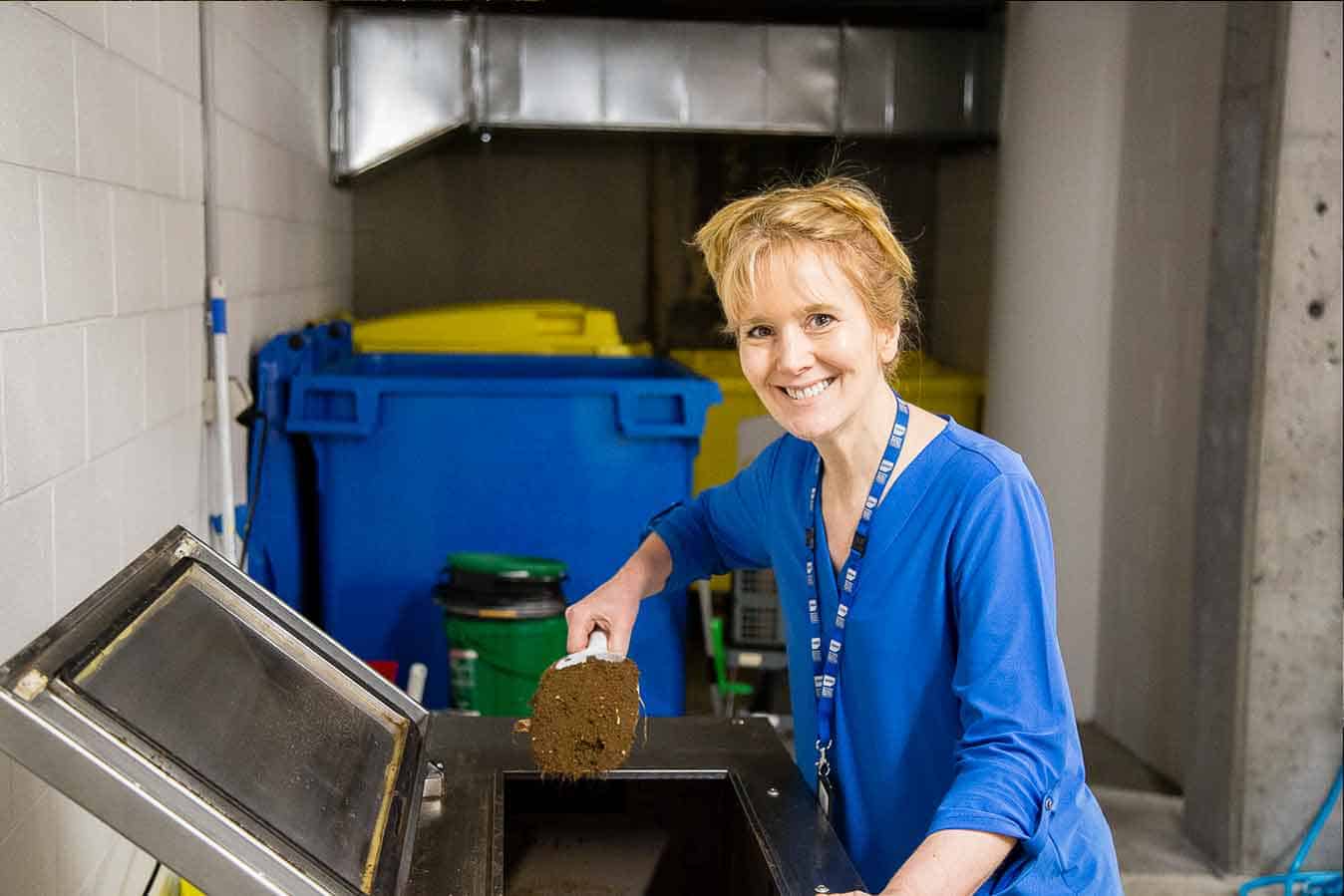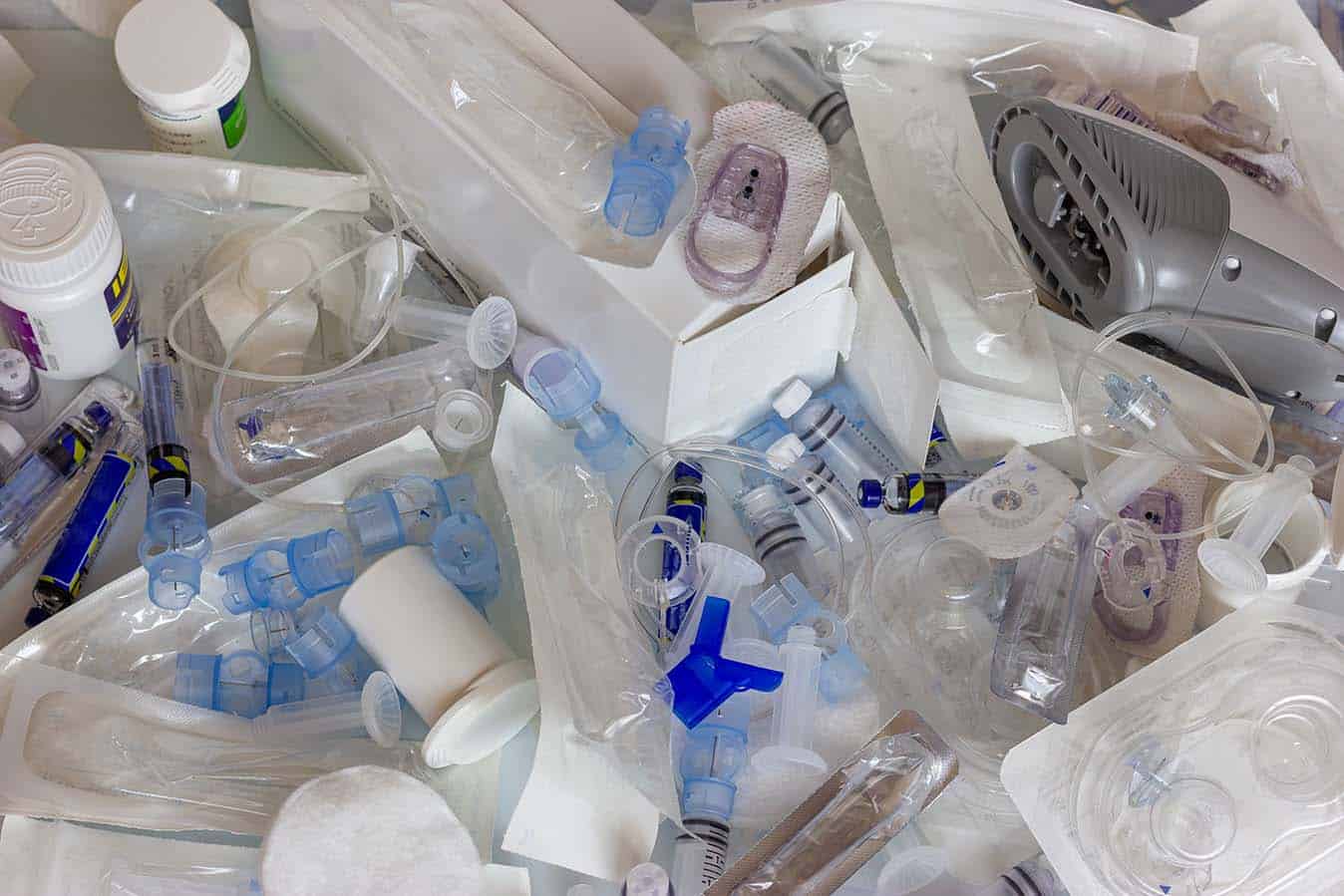Nurses and midwives are key players in leading action on climate change to protect our health. Let’s educate, support and encourage each other to achieve a sustainable future.
Health service delivery in Australia currently contributes 7% to our nation’s emissions. Fortunately, the response to climate change is increasingly being recognised as a healthcare priority across the sector.
While there is growing concern about healthcare’s carbon footprint, the havoc extreme climate events and increasing incidents of bushfires and heatwaves is having on health is also detrimentally affecting providers in managing healthcare needs.
Correspondingly, many healthcare providers are ramping up their efforts to pursue sustainable healthcare.
According to a Review of Sustainable Healthcare, developed by the Climate and Health Alliance (CAHA) and Monash Sustainable Development Institute, around a third of all Australian hospitals are now part of the Global Green and Healthy Hospitals (GGHH) network. The GGHH network has assisted these hospitals to actively work on a range of sustainability goals areas, such as energy, waste, leadership, procurement, and others, as per their sustainable goals.1
Over 80 countries, including Australia and New Zealand joined the (GGHH) network. Australian health institutions are part of the Pacific regional network of GGHH, founded and managed by CAHA.1

ANMF Vic Branch’s Sustainability Officer Ros Morgan welcomes this momentum and hopes it will encourage local champions to persevere, knowing they are part of a larger movement. Environmental sustainability needs to be embedded at every level of health service, Ros says, from supporting and enabling local champions, to governance accountabilities. This includes health services monitoring, measuring and reporting emissions, with targeted improvements.
Ros says while there is a growing global movement to measure the emissions profile in healthcare, there is a lack of standardised processes and metrics for monitoring and improvement. The Review of Sustainable Healthcare states nearly half (45%) of surveyed healthcare services for their review were unsure about the implications of sustainability activities on safety and quality of care.1
Ultimately, healthcare needs re-evaluation to find better ways to implement sustainable practices.
This includes reducing low-value care, unwarranted variation and a reduction of large amounts of waste to improve the safety and quality of care, equity to access and decrease healthcare’s sizable carbon footprint.1,2
A US study quantified solid waste and greenhouse gas emissions from inpatient stays at a large US hospital. The results showed that a regular inpatient acute care unit generates 5.5kg of solid waste and 45kg CO2-e per hospitalisation day. The ICU generated 7.1kg of solid waste and 138kg CO2-e per bed day.
Over one year, an estimated 656,000kg of CO2-e and 80,000kg of solid waste were generated from acute care. An estimated 349,000kg of CO2-e and 18,100kg of solid waste each year from intensive care. This is equivalent to the GHG emissions from 139 passenger vehicles and 74 vehicles driven for one year, respectively.
The study suggested that most emissions originated from the purchase of consumable goods, building energy consumption, purchase of capital equipment, food services, and staff travel.2 Within this list there are things that we can influence says Ros.
There are lots of moving parts in this jigsaw, Ros argues. For example, currently, preventive health is allocated less than 2% of Commonwealth, state and territory health expenditures. There are now calls to increase that amount to 5%.2
Yet, Ros believes this sum is still inadequate, considering preventative health’s many benefits.
Education, early recognition and trained intervention can often mean both complications and admission are avoided, Ros observes.
“An avoidable admission is an avoidable emission. It’s ethical, it’s compassionate, and it’s attainable.”
Resourcing sectors such as aged care and mental health adequately, will also reduce unnecessary admissions, resulting in improved quality and safety of care and lessen healthcare’s carbon footprint, Ros suggests.
“For example, it could be argued that even ANMF’s Aged Care Campaign has sustainability implications,” she says.
“If [the residents] were getting the care they needed because they had adequate staff numbers, then they wouldn’t need escalating to a hospital admission.
They would have early assessment and intervention in place, delivered by trained staff. It’s a win for everyone as well as our emissions profile.”
GOVERNMENT LEADERSHIP IN SUSTAINABILITY
Sustainable healthcare policies and programs now exist in most states and territories, including the creation of sustainable units. Yet many are in the early stages of implementation and not incorporated at the level of individual service.1
Nevertheless, state and territory governments have committed to achieving net zero emissions for the public health sector. The ACT Government has committed to zero emissions by 2040, and the NSW Government by 2050, and halve emissions by 2030. The NT has an emissions reduction target of net zero by 2050, while the WA government recently announced 2030 emission reduction targets of 80% below 2020 levels.
Currently there are no policies that support sustainable healthcare at the Commonwealth level. However, the Albanese Government has recognised the need for leadership in this area and has committed $3.4 million in its 2022-23 Federal Budget to fund Australia’s first National Health and Climate Strategy and a National Health Sustainability and Climate Unit to better prepare the health system for the challenges of climate change.
“As well as adapting to the new challenges of climate-related health issues, it’s important that our health system is included as part of the climate solution by reducing its own carbon footprint,” Assistant Minister for Health and Aged Care Ged Kearney MP said when speaking about the strategy.
Other relevant activities include the Australian Health Protection Principal Committee (AHPPC), which has identified climate change as a health protection priority.
There is also the Healthy Environments and Lives (HEAL) research network funded by the National Health and Medical Research Council to strengthen the Australian health system’s resilience, preparedness, and responsiveness to climate change.1
Recognising that improving sustainability can improve the safety and quality of care, the Australian Commission on Safety and Quality in Health Care has drafted a Sustainable Healthcare Module for healthcare providers.
The ANMF Vic Branch suggests the module would ensure health services consider their vulnerability to climate change and how they contribute. It would provide a recognised framework for the many sustainability activities nurses, and midwives undertake, embedding them into a safety and quality in health service delivery.
The module, developed with the guidance of a Sustainable Environment Advisory Group of industry experts will be for health service organisations. It is anticipated that the module will be voluntary and can be assessed as part of the organisation’s routine accreditation.
The module has undergone recent public consultation, and a revised draft module is currently being reviewed by the Commission’s Sustainable Healthcare Advisory Committee.
References
-
Wyns A, Bragge P, Armstrong F, Carino, S, Dolker D, Lennox A, Tsering D, A review of sustainable healthcare policy, practice, and research with a focus on safety and quality. Monash Sustainable Development Evidence Review Service, BehaviourWorks Australia, Monash University, and Climate and Health Alliance, Melbourne, June 2022. Accessed Feb 2023 safetyandquality.gov.au/publications-and-resources/resource-library/review-sustainable-healthcare
-
PHAA Pre-Budget submission for the 2022-23 Commonwealth Budget. Accessed Feb 2023 treasury.gov.au/sites/default/fi les/2022-03/258735_public_health_association_of_australia.pdf
-
Prasad PA, Joshi D, Lighter J. et al. Environmental footprint of regular and intensive inpatient care in a large US hospital. Int J Life Cycle Assess 27, 38–49 (2022). doi.org/10.1007/s11367-021-01998-8 Accessed Feb 2023
Healthcare sustainability tips and hints
The ANMJ was asked:
“Many nurses were embarrassed by the amount of waste they generate at work but locating the correct bin, pulling apart items to sort components is not easy in an acute environment. Any knowledge of processes and resources that would make the process simple and effective would be greatly appreciated.”
We reached out to nurses and midwives for their suggestions.

Sustainability tips or questions
We don’t need to reinvent the wheel to find ways to reduce our impact on the planet.
Ask a question or share your sustainable practices at work and at home with the ANMJ so nurses and midwives nation-wide can do their bit to save the planet. Together we will make a difference.
One lucky contributor will also receive a $50 e-voucher from Koala Eco. Email ANMJ with your tip or question at: ClimateActionForHealth@anmf.org.au
“I would say that time poor nurses need the hospitals to help. Hospitals need to make it just as easy to recycle as it is to throw things in landfill bins. Set up recycling stations with very clear signage, educate on induction and regularly throughout the year and hospital recognition of departments doing well from audit results.” Jacqui Dunn
“Easy to view pictures of what is accepted in each bin. Helps take the stress out of remembering what waste is accepted in which bin. Have separate bins in shared areas. Educate ALL staff , nurses, cleaners, doctors, allied health on waste streams and sustainability projects.” Marj Garcia
“Make it easy as possible for many people to participate by having good systems in place thus saving everyone’s time.” Linda Cunningham
“I am time poor being a full time clinician but I have just persevered. I think the key to success is just that constant ongoing attempt to create change and engage people in that change process through knowledge and information transfer and also education. It’s a hard task but it’s something I am very grateful that I persisted with. Don’t let someone tell you that it can’t be done. Work on how to work around those problems even if that’s a different way of approaching things.” Darren Bradbrook
More resources to help make sustainability easier can be found at: anmfvic.asn.au/healthenvironmental sustainability
Do you live in Victoria and want to learn new ways to reduce waste, promote sustainability and improve your community?
Join a growing movement of health professionals who are changing the way we deliver health and striving to improve our work, home and wider environments at the ANMF Vic Branch Health and Environmental Sustainability conference on Thursday 27 April 2023.

TO REGISTER VISIT: anmfvic.asn.au/events-and-conferences/2023/04/27/health-and-environmental-sustainability-conference
Sustainability in health champion
Anaesthetic nurse Darren Bradbrook has been on a sustainability crusade to reduce hospital waste at one of Adelaide’s largest hospitals. Through his eff orts he has single handily forged a path with contractors within the public health sector in South Australia to divert hospital waste from land fill.
Initially, Darren set up recycling streams for PVC, low and high grade plastics, cardboard, paper and later aluminium, at the 593 bed major public tertiary hospital, resulting in a 60-70% diversion of its operating room waste from landfill.
“Flinders [Medical Centre] was the first hospital in South Australia to pick up any of these initiatives.”
Darren says since then there has been significant progress in reducing land fill.
“Our contractors are now able to receive more diverse range of product.
“We have now amalgamated low grade plastics to a dry material stream which has enabled our processes to be more streamlined. It enables our processes to have more capability for land fill diversion which really has given people a bit more encouragement with regards to feeling like they are contributing to a cause that started off so strong but has now been endorsed by so many more people at the other end of the supply chain.”

Through his efforts Darren is now well known and recognised in hospital waste reduction in South Australia and interstate. He is also influential with hospital management, attending strategic meetings to help better improve service delivery in the hospital.
“I really get listened to and I’ve got the Director of Nursing at Flinders very much on board [to continue working towards sustainability].”
Darren says the hospital has been working hard towards some big infrastructure changes in regards to business plans. These include compactors on site which primarily deals with bi-product, where previously waste was trucked off the grounds. This has resulted in improved safety, storage and processes.
An initiative Darren is working on at the moment is the development of an intranet page- focussing on all things sustainable.
“This is a very large piece of work but it’s been well received and is very much supported by the executive body of the hospital. That will hopefully give our local staff and people who have access to that intranet an opportunity to look at what we are doing, what we are planning on doing and what targets we are aiming for.”
The site also intends to encourage people to get involved in recycling processes.
“We hope that when we have this intranet formed it will snowball into the other health networks in our state.”
Each issue we will be highlighting a sustainability in health champion. To nominate yourself or someone else, contact the ANMJ at ClimateActionForHealth@anmf.org.au
I saw the sign!
Signs and prompts can help colleagues remember to follow organisational ‘norms’ or expectation that support positive sustainable behaviour. The Planet Ark Business Recycling website suggests tips that can make signs as eff ective as possible:
MAKE IT NOTICEABLE:
Make it stand out with bright colours or an eye-catching image. Once a sign has been in the same place for a few weeks people stop noticing it so changing the colour or moving it around a bit will ensure people keep on noticing it.
MAKE IT SELF-EXPLANATORY:
If you want people to switch off the lights when they leave a room, make sure that’s exactly what the sign says. Something like “Please switch off the lights when you leave the room,” is more likely to be effective than one like “Save the planet, turn me off .”
PUT IT AS CLOSE TO THE ACTION AS POSSIBLE:
If you want people to use the correct recycling bin, put the sign on the lid of the bin, or just above it. You can create an association between the desirable action and the location where it happens.
MAKE IT POSITIVE:
“Don’t” isn’t a nice word and most people become resentful being told not to do something. So whenever possible, make your signs positive. Words like “Thanks for turning your computers off at night,” is much more likely to be effective than ‘Don’t leave your computers on overnight.” And because it’s a nicer message and makes people feel good about the actions they have undertaken, it increases the likelihood that the actions will be carried out in the future.
For more information go to: businessrecycling.com.au/research/right-signs.cfm









